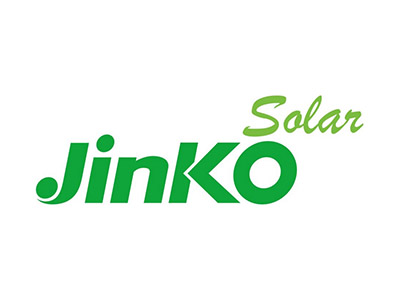JinkoSolar Holding Co., Ltd. (JKS) Q2 2020 Results - Earnings Call
JinkoSolar Holding Co., Ltd. (NYSE:JKS) Q2 2020 Results Conference Call September 23, 2020 8:00 AM ET
Company Participants
Ripple Zhang - IR Manager
Kangping Chen - CEO
Charlie Cao - CFO
Gener Miao - Chief Marketing Officer
Conference Call Participants
Philip Shen - Roth Capital Partners
Brian Lee - Goldman Sachs
Operator
Hello, ladies and gentlemen, and thank you for standing by for JinkoSolar Holding Co., Ltd. Second Quarter 2020 Earnings Conference Call. At this time, all participants are in listen-only mode. After management’s prepared remarks, there will be a question-and-answer session. As a reminder, today's conference call is being recorded.
I'd now like to turn the meeting over to your host for today's call Ms. Ripple Zhang, JinkoSolar Investor Relations Manager. Please proceed, Ripple.
Ripple Zhang
Thank you, operator. Thank you everyone for joining us today for JinkoSolar’s second quarter 2020 earnings conference call. The Company's results were released earlier today and are available on the Company's IR website at www.jinkosolar.com as well as on newswire services. We have also provided a supplemental presentation for today's earnings call, which can also be found on the IR website.
On the call today from JinkoSolar are Mr. Chen Kangping, Chief Executive Officer; Mr. Charlie Cao, Chief Financial Officer; and Mr. Gener Miao, Chief Marketing Officer. Mr. Chen will discuss JinkoSolar’s business operations and the Company highlights, followed by Mr. Miao, who will talk about the sales and marketing, and then Mr. Cao, who will go through the financials. They will all be available to answer your questions during the Q&A session that follows.
Please note that today's discussion will contain forward-looking statements made under the Safe Harbor provisions of the U.S. Private Securities Litigation Reform Act of 1995. Forward-looking statements involve inherent risks and uncertainties as such our future results may be materially different from the views expressed today. Further information regarding this and other risks is included in JinkoSolar’s public filings with the Securities and Exchange Commission. JinkoSolar does not assume any obligation to update any forward-looking statements except as required under the applicable law.
It's now my pleasure to introduce Mr. Chen Kangping, CEO of JinkoSolar. Mr. Chen will speak in Mandarin, and I will translate his comments into English. Please go ahead, Mr. Chen.
Kangping Chen
Thank you, Ripple. Good morning and good evening to everyone, and thank you for joining us today.
During the second quarter, our total solar module shipments reached 4,469 megawatts, total revenues were $1.2 billion, and gross margin was 17.9%. Demand in overseas markets was negatively impacted due to the COVID-19 pandemic. Nevertheless, our high quality products well-diverse global marketing network and premium customer service stood out among the competition and helped to maintain the growth momentum. In shipment volume, most of our orders were executed on time and we were able to increase our market share.
At the start of the second quarter, weak demand from the overseas market led to a drop in module prices. Many upstream manufacturing companies controlled inventory in order to reduce risk, leading to a decline in raw material prices. As a result, stiff competition in the solar supply chain made it tough for companies with limited product competitiveness and cost control capabilities to remain competitive. The smaller companies have had to successively reduce their capacity utilization or withdraw from the market completely. Costs in the solar supply chain increased in the latter part of the second quarter, in part due to the rush in installations in China, driving up demand and the overseas market showing positive signs of improvement from the peak of the health outbreak. The recent increase in costs were also influenced by the supply shortage of polysilicon, which further squeezed profit margins for now integrated solar module manufacturers, whereas the production capacity and infrastructure of integrated manufacturers demonstrated strong resilience to risks and the price fluctuations.
The epidemic has accelerated the survival [ph] of fitted and forced further improvements throughout the industry supply chain, substantially increasing the leverage of integrated module manufacturers. The combined shipment volumes of the top five solar module manufacturers are expected to account for 65% to 70% of the industry’s total shipments this year.
We expect the market share of the top five module manufacturers to increase next year. When the global market share is dominated by a handful of top solar firms, excellence in technology will stand out even more in this landscape. In the future, profit margins resulting from in -- balances between supply and demand are going to be less. Barriers brought by advanced technology and product differentiation will become more significant. Recently, our large area N-type solar cell reached a conversation efficiency of 24.79% and set a new world record for the industry. We believe in the next two or three years, advanced cell technology will make the greatest contribution to the competitiveness of end products. We are optimistic about the direction of our N-type cell technology. While we currently have the leading edge in the market in terms of cell technology, we will continue to invest heavily in our R&D to ensure the matching competence for silicon wafers and modules.
In 2020, the popularity of large size and bifacial modules exceeded our expectations and demonstrated that further reduction in levelized cost of energy remains the core distinction among clean energies. Together with several leading PV companies, we were working to establish a new standard for 182 millimeter wafers in order to reduce the industry’s upstream and downstream coordination problems caused by size, diversification and the increase in cost, and promote the efficient and the centralized development of the industry. We’re currently increasing our R&D resources into technological research related to high power output, 182 millimeter modules with the aim of promoting these modules as our main product for next year.
Since the second quarter, the global pandemic has experienced gradual recovery in between epidemic wave causing restrictions to come back and to play in certain market. As a result, global demand for PV installations has gone through extreme lows and then rapid recovery, which has then influenced the annual installation capacity in many regions. The coronavirus pandemic has affected demand to a certain extent. However, the decline in prices has also revived demand. As epidemic situation continues to ease, we believe demand will eventually accelerate. The shortage of supply in China market has driven up prices along the supply chain. At the moment, prices have stabilized and we expect strong market demand to continue on until the end of 2020. Due to the recent economic environment and the pandemic situation, the growth of the PV industry has slowed down, but the rate of the progress in the industry has actually beaten expectations. We remain firmly confident about the future of the solar as a new energy source.
In the short term, 2020 is the last year for subsidies in China market. Thanks to adequate preliminary preparations and the increased participation of more powerful state-owned and essential enterprises, the pace and the completion progress of bidding projects in 2020 are expected to be better than in 2019. The overall recovery in the overseas markets remains supportive with some regions experiencing surprising growth in the mid and long-term. Looking back to the last two phases of China's five-year plan, the actual completion rate of PV projects has significantly exceeded expectations. With the withdrawal of market subsidies, industry drivers have undergone fundamental changes. China’s PV installation capacity has entered into a period of steady growth momentum, which increases the probability of accelerated growth over the next five years. Solar energy has become one of the most cost efficient power sources around the world, and we expect new technology in energy storage to usher in a new era of rapid development for the sector and the new growth to be the PV energy storage industry.
In short, PV has already been extremely competitive in terms of technology improvements and the cost reduction capabilities as well as potential resulted from accelerated transformation in the energy sector and diversified application scenarios in the downstream market. Gener will address more on markets later.
At the end of the second quarter, our in-house production capacities for mono silicon cell and high-efficiency solar modules have reached to 20, 11 and 25 gigawatts respectively with 5 gigawatt module capacity ramped up in the third quarter. Our in-house production capacities for mono silicon wafers cells and high efficiency solar modules are expected to be reached 20, 11 and the 30 gigawatts respectively by the end of 2020. In order to benefit from the high growth in the broader market space and the total shipments for next year, we are now considering further increases in production capacity for each segment and will increase the proportion of integrated level accordingly.
The PV industry is facing rapid changes, and that's why we have to maintain a certain level of flexibility in our production capacity. This will give our business the advantage to respond to any change in a timely manner while sustaining the reliable operations and remaining fully focused on the evolving market demand.
This week, we announced our plan to list our principal operating subsidiary Jiangxi Jinko on the Shanghai Stock Exchange's Sci-Tech innovation board, or the STAR Market. We believe the listing of JinkoSolar on the New York Stock Exchange, as Jiangxi Jinko on the STAR Market will raise our profile with investors, both in China and globally, and provide us with additional opportunities to grow in the future.
Before turning over to Gener, I would like to quickly go over our guidance for the third quarter of 2020. We expect total solar module shipments to be in the range of 5 to 5.3 gigawatts for the third quarter of 2020. Total revenues for the third quarter is expected to be in the range of US$1.22 billion to US$1.3 billion. Gross margin for the third quarter is expected to be in the range of 17% to 19%. We reiterate our guidance for the full year 2020 shipments to be in the range of 18 to 20 gigawatts.
Gener Miao
Thank you, Mr. Chen.
During the second quarter, total shipments of solar modules reached 4,469 megawatts, covering 91 countries worldwide. Asia Pacific, North America, China and the Europe contributed the largest proportion of the total shipments and are expected to continue to contribute substantial volumes in our total shipment for the third and the fourth quarters. In terms of the market demand, our rationing [ph] installations in the domestic market drove significant growth in China at the end of second quarter. As more and more countries return to normalcy and the health crisis continues to improve overseas, we have seen a notable recovery in global sales.
Strong market demand in the third quarter has driven prices up sharply throughout the supply chain, forcing some installation demand to be delayed into 2021. At present supply and demand has re-stabilized which will keep sales forwarding until the fourth quarter. We expect the total global installations to be close to 120-gigawatt in 2020. Overseas demand in 2021 is likely to grow with active transactions in Asia Pacific, Middle East, North America and Europe. There are also a large number of installation projects planned in China in 2021.
Given that the original target of 15% of non-fossil energy consumption in 2020 has already been exceeded, the Chinese government is currently drafting its 14th Five-Year Plan to amend the original target to 20% of non-fossil energy consumption by 2030. In the next five years, average annual installations in Chinese market will most likely reach 60 gigawatts.
After U.S. economy started to recover in May, demand from the residential market has gradually recovered from the lows of the epidemic and our proved smart rooftop solar PV installations have returned back to January's pre-pandemic level. The U.S. imported approximately 15-gigwatt of modules in the first seven months of the year and average monthly import volume was over 2 gigawatts. After falling to their lowest record in June, monthly imports rebounded to 2.2-gigawatt level in July.
Recently, the U.S. Democrats -- the U.S. Presidential candidate, Joe Biden, proposed a new substantial -- sustainable infrastructure and a clean energy plan, which aims to achieve carbon-free power generation by 2035 and set clear objectives for the entire economy to be carbon neutral with net-zero GHG emissions by 2050.
In general, Europe has gradually returned to normal. Demand has been relatively stable in several major PV markets, including Spain, Germany, Netherlands, Poland, Portugal and Italy. Actual installed capacity in the European market this year is expected to be significantly higher than our previous expectation. Recently, the second round of the solar auctions in Portugal attracted worldwide attention and set a new world record at a price of $0.01316 per kilowatt hour.
Germany has amended the Renewable Energy Act to extend bidding for 18.8 gigawatts of PV power generation projects by 2028, which comprises of 5.3-gigawatts of rooftop installation and 13.5-gigawatt of large-scale ground power stations.
Netherland [ph] held its first large-scale solar auctions for renewable energy and the solar dominated with the largest share of 796 megawatts. Commencing in 2021, the EUs 27 member states are planning to adapt to 2030 Climate and Energy Framework that will require renewable energy to account for at least 32% of primary energy consumption by 2030. This framework will certainly stabilize the long-term development of clean energy in Europe.
India has been one of the most severely affected countries in the world, and the coronavirus pandemic continues to intensify with new infections climbing over 90,000 cases each day. As restrictions continue to ease nationwide, local transmission of the coronavirus is expected to continue in India for some time. Furthermore, India’s worsening economic ties and the trade values with China will further affect the many projects currently under development in India, as well as some previously commissioned PPA projects. In particular, the border adjustment tax in the India has lowered our expectations for PV installation in Indian market this year.
Coronavirus cases have softened sharply in Middle East, and new daily cases in major countries have remained below 2,000. The health pandemic countries to take its toll in Latin America as Brazil emerged as a top global coronavirus hotspot, while Chile and Mexico are both seeing some improvements. On a brighter note, Brazil has to removed its import tariffs for 101 specific items, including solar modules, trackers and inverters, thus reducing taxes from 12% to zero since August the 1st. This is expected to help the distribution market to recover from the impact of COVID-19.
In short, although periodic outbreaks of the new current pandemic do trigger some concerns, we see economic activity in most regions of the world improving significantly, despite the fact that policies and economic slowdown in certain countries due to COVID-19 will act as a drag on solar installations. The increasing competence of the global solar supply chain and the high grade advantage of clean energy have won growing support from governments and installers, in the mid to long term we expect that reductions in solar costs will continuously beat expectations. And as grid parity is welcomed everywhere, the impact from policy cycle will greatly diminish.
With continued cost reductions and incremental growth coming from the expanding energy storage business, we are facing exciting new opportunity and our potential PV market size is expected to grow substantially. Recently, we were ranked as a Top Solar Brand in Debt Financed Project and named one of the most bankable PV manufacturers in the world by Bloomberg new energy finance. 100% of BNEF survey respondents considered the Company as highly bankable. This outstanding brand recognition connects us to more customers in the broad PV market space. We will continue to dedicate the resources to stringent quality control of our high efficiency products to improve customer service excellence and to work more closely with our clients for customized product solutions according to their project requirements.
This year, we have been able to accelerate the promotion of applications that enable further reduction of LCOE. We have also joined up with several leading PV companies to establish a new standard for 182 millimeter wafers and launched the P-type Tiger Pro and N-type Tiger Pro module with maximum power output of 581 and 610Wp respectively. So far, we have secured over 1 gigawatt of orders for high efficiency modules from the Tiger Pro series, and the first batch is scheduled for delivery in August -- October this year.
Next year, large-size wafer products are expected to account for over 70% of our total shipment, while significant growth in demand is expected for higher power output by efficient products. Finally, we are currently conducting market research and accelerating technical results associated with new products to better understand how we can serve the need of our customers and facilitate the provision of more differentiated products and services for our global clients. With that, I will turn it over to Charlie.
Charlie Cao
Thank you, Gener.
We reported strong operational and financial results for the quarter with total shipments and gross margin in line with our guidance and total revenue exceeding our guidance. Financial indicators, such as total revenues, gross margin and net income have all increased dramatically compared with the same period last year. The Company’s increased in-house integration levels have contributed to this year-over-year growth.
Let's go into more detail for the quarter now.
Total revenue was $1.2 billion, up 22% year-over-year. Gross margin improved to 17.9% compared to 16.5% last year. EBITDA was $119 compared to $66 million in the same period last year. Non-GAAP net income was $53 million, significantly increased year-over-year. This translates into non-GAAP diluted earnings per ADS of $1.2. Total operating expenses accounted for 12.8% of total revenue, an increase from 12.6% sequentially and flat with the same period last year. The sequential increase was primarily due to an increase in shipping costs associated with the significant increase in solar module shipments during the second quarter of 2020 and an increase in disposal loss on fixed assets.
Moving to the balance sheet, at the end of second quarter, our balance of cash and cash equivalents were $970 million compared to $670 million by the end of Q1. Accounts receivable turnover days were 71 days compared to 76 days in the second quarter last year. Inventory turnovers were 90 days compared to 140 days in the second quarter last year. Total debt was $2.3 compared $1.8 billion by the end of Q1 in which $128 million was related to international solar projects. Net debt was $1.37 billion compared to $1.14 billion by the end of Q1 2020.
On Monday this week, we announced our strategic plan to list our principal operating subsidiary Jiangxi Jinko on the Shanghai Stock Exchange after certain inter group restructuring. If the listing is successful, we expect to have greater access to cheap resources of capital which will support us in capturing a greater share of market goals and value creation. We are committed to maintain our New York Stock Exchange listing for JinkoSolar. The pre-IPO financing, which is a practice to be completed by the end of next month will be used for the advanced capacity expansion and the need of working capital.
This concludes our prepared remarks. We are now happy to take your questions. Operator, please proceed.
Question-and-Answer Session
Operator
[Operator Instructions] First question is Philip from Roth Capital Partners.
Philip Shen
Hi everyone. Thanks for the questions. In terms of -- I would like to talk about the Q4 outlook. I think, the implied shipment guide is for 6 gigawatts, which would be up 30% year-over-year. How do you expect your margins to trend in Q4? I think, back on the Q1 call, you guys have talked about being 75% booked for the full year of 2020. With pricing through the entire supply chain going higher, including poly and glass, how are you able to -- can you talk about your margin outlook for Q4 as well as how are you able to maintain the 17% to 19% of the Q3? Thanks.
Charlie Cao
The outlook in Q4, we expect gross margin, comparing to the third quarter is roughly essentially going down, given the situation, the production cost, particularly the material cost is increasing, due to the shortage of the certain materials. But, at the same time, the market price in China, we are expecting to be on the upward side, compared to particularly in the second quarter and third quarter. Given the situation, we’re expecting the gross margin -- we have some time pressure and it's going to be slightly lower compared to the third quarter.
Philip Shen
Okay. Thank you, Charlie. I think, you guys have fixed pricing for your contracts. Have you been able to raise the pricing on customers, which had fixed pricing, for example, in either Q3 or for Q4 shipments?
Charlie Cao
We are expecting -- in the second quarter, we're expecting China will be very strong. So, we have sufficient and open capacity as that had back to second quarter to catch up the opportunities, market price increase. And in general, if we sign the contract, we still stick to our original contract terms.
Philip Shen
Got it. Okay, great. And then, can you talk about -- I think one of your peers talked -- gave some very specific outlook and even guidance for 2021. Can you share what your thoughts are for 2021? So specifically, I think, you increased your module capacity to 30 gigawatts. Is that a good number to use for shipments for next year? And, how do you expect your margins to trend as we get through each quarter in '21?
Charlie Cao
2021, overall the market situation, we're expecting pretty good year. And we announced our plan to get access to China capital market. And we are expecting to close RMB3.1 billion financing by the end of the month. And we have the plan to invest, particularly the sales capacity as a mono wafer capacity. And if you look at the situation now, the tier 1 companies, they are dominating the market shares. And we’re expecting more, I think -- compared to this year, we are expecting our growth rate will be gradually higher next year. So, 30 gigawatts, we are reaching capacity of the module. I think, it's a kind of reasonable maybe some base case.
Gener Miao
Yes. We are still working through -- we are still working on our 2021 plan yet, budget yet. We have not finalized it yet. So, we're still working on it. But, I think, somewhere around 30-gigawatt will definitely will be our target to follow.
Philip Shen
Great. Okay. That's helpful. And, coming back to your 458 million pre-IPO raise, can you talk through kind of how you got to the valuation at which that equity comes in? And also, what the use of proceeds will be? I'm imagining a big chunk of that is going to be for capacity expansion in '21. So, I know you just mentioned Gener that you guys are still evaluating, but any additional color on that would be fantastic. Thanks.
Charlie Cao
Okay. So, for -- the $3.1 billion sorry, RMB3.1 billion, it's including third-party reputable investors, like the investment arms of reputable commercial banks and investment firm -- brokers in the sector. So back to your first question, how we come out with the valuation is based on negotiation with third-party investors. And for the need of the -- for the founding -- the majority part will be for the advanced capacity expansion. And if you look at our capacity, we have very-low capacity in solar cells. That will be our key focus, as well as we plan to increase our mono wafer capacity and to solidify our competitiveness.
Philip Shen
Great. Okay. One last housekeeping question. Can you share what the depreciation and CapEx was for Q2, and then, your expectations for Q3 and Q4?
Charlie Cao
I need to get back to you with the number maybe after call. I assume, roughly depreciation should be each quarter -- let me get it back to you after the call. I need to check the numbers. But, CapEx, roughly 3.5 billion this year.
Operator
[Operator Instruction] Our next question is Brian from Goldman Sachs.
Brian Lee
Just maybe a quick housekeeping follow-up from Phil’s questions. Do you have the cash flow from operations and free cash flow results for the quarter?
Charlie Cao
No, we have the EBITDA number, right? We announced the EBITDA number as well as Phil’s question on depreciation, I have the number now, It's roughly $40 million and the operating cash flow is negative. Because this year -- this quarter, we anticipated next quarter our shipments will continue to increase. And in terms of the detail numbers, I will get back to you after call.
Brian Lee
Okay. Fair enough, will follow up. And then, on the balance sheet, I noticed that the debt number was up about $500 million from Q1 to Q2. Can you talk to what that was related to? And then, any kind of bigger picture thoughts around delevering?
Charlie Cao
From the deleverage perspective, we are in the process of financing 3.1 billion, which will decrease our leverage as well. And in terms of second quarter versus first quarter, the debt -- total debt increased a little bit, in connection with capacity expansion as well as working capital for the inventories account receivables.
Brian Lee
Okay. Fair enough. And then, I guess, related to the debt and next steps in the STAR listing process, you mentioned some intercompany restructuring. Could you elaborate on what that means? How long it takes? And then, does it have to do with some of the intercompany loans? And, can you just kind of give us a bit more detail around what has to happen from here on? And how long that will take?
Charlie Cao
Yes. It’s a very short timing in terms of the organization, because we need to put 100% assets, all manufacturing assets under the China entity. And it’s -- for us, it's easy because we only need to organize certain, it's not all entities, particularly the cells entities under the China entities control. And, in terms of scope, I just want to emphasize, it’s 100% manufacturing assets, including wafers, cells, modules, everything. But we still have some two or three international solar downstream projects, which we’re trying to scale down to in future. So, international solar downstream assets are not in the scope of the entities we plan to launch an IPO in China.
Brian Lee
Okay. I appreciate that color. And then, maybe just last one for me. I know Charlie, you said that gross margins are -- they're being guided flat basically in 3Q and you're saying down slightly in 4Q. Can you help calibrate that a little bit, just given there's so much volatility in the supply chain and specifically on polysilicon cost? One of your peers talked about gross margins being down kind of 500 basis points in the back half of the year versus the first half of the year and being in the mid teens. Is that how we should think about sort of that slight downtick for you? Are you going to be back, into the kind of the mid teens gross margin level in 4Q?
Charlie Cao
Yes. I think, back to second quarter, originally we have relatively pessimistic outlook for second half of the year, because the global coronavirus situation. But, the situation is -- most of it depends -- not expected [Technical Difficulty] renewable energy and as well as the price is upwards -- reached to the bottom in second quarter, and up dramatically in the third quarter and fourth quarter. But on the other side, certain materials, including polysilicon, glasses shortage in supplies, which put some pressure on the cost and internal production costs. So, we -- that is why we expect this fourth quarter, the gross margin will be in the downward trend comparing to third quarter and second quarter.
Brian Lee
All right, fair enough. But, would you say mid teens is too pessimistic of you, or is that about the right range?
Charlie Cao
You mean the fourth quarter, right?
Brian Lee
Yes, fourth quarter specifically.
Charlie Cao
I think, it’s slightly down comparing to third quarter. 13% is -- I don’t expect that number in the fourth quarter.
Operator
Next question is Paul Johnson from [indiscernible].
Unidentified Analyst
So, there's been a lot of talk about China's next five-year plan. And there's been some speculation that the target could go up to 50 gigawatts a year. But then, on the flip side of that, clearly incentives end next year. So, any country where we've seen incentives end, you've seen a big decline in demand. So, can you talk about what your view is on what you see with respect to demand in China next year? And then, I have a follow-up.
Gener Miao
Sure. I think, for China's 14th Five-Year Plan, currently the market suggesting, the total demand side is substantially increasing and the draft has not been released yet. There is no public information on it. But according to the rumors, we are reading or we're seeing in the market right now, I think that if you convert the total installation number into annual installation number, I think the number is indicating over 60 gigawatts and maybe at the range around like the 60 to 70, even higher.
Charlie Cao
On top of that, I'm not sure you know it or not, our President Xi, had a speech at United Nations. And China is committed to reach the peak of the carbon emissions by the end of 2030. And as well as -- and we will try to achieve the carbon -- zero carbon emissions by the 2060, which is as showing, China's commitment to renewable energy. And so, as well as the next five years’ time, I think it's just like Gener said, it's under discussions. But, we think the possibilities, the high possibilities, and China will raise upward the target.
Unidentified Analyst
Okay. That's very helpful. And then, there's been a lot of focus on relisting -- subsidiary listing of U.S. ADR stocks in China, on the Shanghai Stock Exchange. Based on our understanding, a lot of U.S. investors are expecting listing on the Shanghai Stock Exchange, and then that profit to be used to buy U.S. ADR stock. But, based on our understanding, is it -- we believe it's illegal in China to list on the Shanghai Stock Exchange, and then use those proceeds outside of China, i.e. outside of Shanghai. Do you guys know if that's true or not, and do you agree with that?
Charlie Cao
I think, the actual topic, particularly in China, let's say you issue this year 10% and typically, you have use of the targets, you typically use for the some CapEx as far as working capital. But, in China, for the public companies, there is some requirements, let's say 10% net income each year, the public companies are required distribute as dividends to investors. From that perspective, I need to check through the lawyer. But, from that perspective, the 10% net income, distributing as dividend, I think, from my perspective, I need to check, but I think from dividends perspective it's okay. And the China entities are able to distribute dividend to -- out of China and ultimately a dividend to the U.S. shareholders. But, I need to check.
Operator
[Operator Instructions] There are currently no more questions. Management, do you have any following remarks?
If that is no, then this is the end of today's call. And thanks everyone for joining this call. And you may disconnect now. Goodbye.






